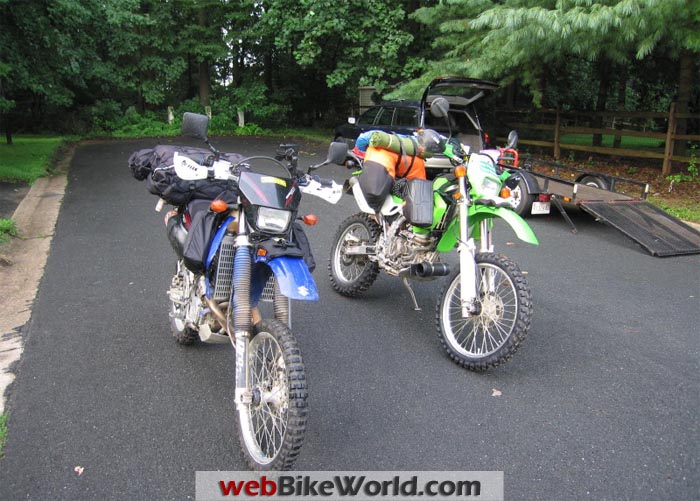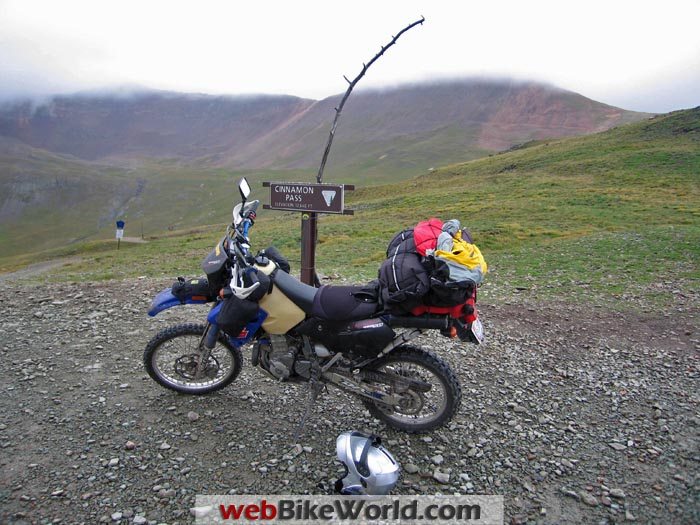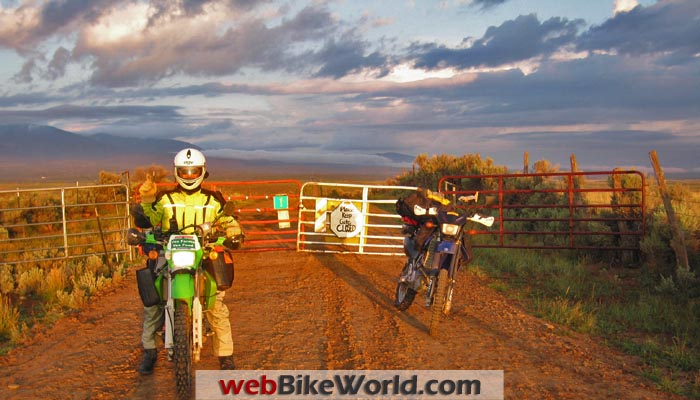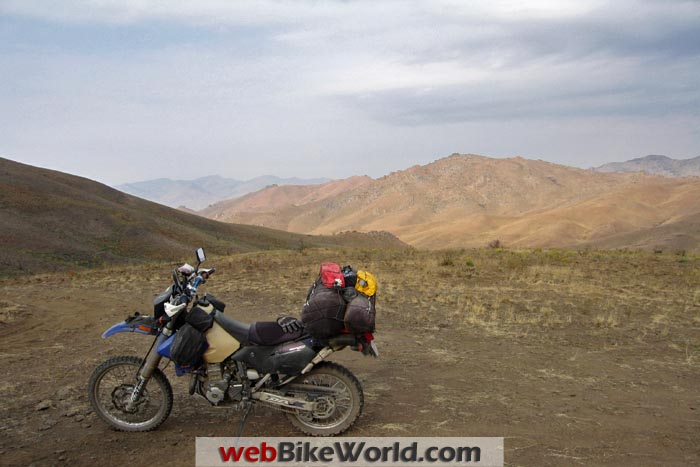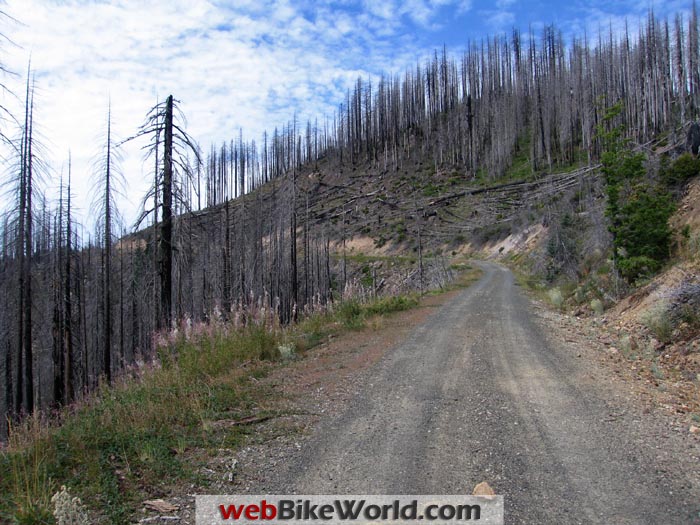The Suzuki DRZ-400S on the Trans-America Trail
Glen and I returned safely from our adventure ride on the western portion of Trans-America Trail.
We successfully completed the trip, reaching Port Orford, Oregon on September 4, 2013 around 4:30 pm, after 13 days on the trail.
So, how did the mighty 2003 Suzuki DR-Z400S (blog), which I bought used especially for this trip, perform on the trail?
In one word — splendidly…although the trip wasn’t without a few “bumps” along the way.
But then, without them, it wouldn’t have been an adventure, right?
The bike did everything I asked it to, with the exception of reaching the summit of California Pass in Colorado, whose summit is 12,930 feet. And that was for two reasons.
First, the DRZ-400S was jetted for the east coast and thus was running too rich for those altitudes.
This was an oversight on my part. All of my bikes are, or have been, fuel injected, which means they automatically compensate for altitude changes, so I didn’t give this enough thought.
As a result, keeping enough power to move the fully-laden Suzuki up the mountain was a real struggle.
I think in the end it would have made it, but for Number 2: Glen’s Kawasaki KLX250 was also jetted for the east coast and simply could not muster the power to summit the pass. Thus we had to retreat, in the rain, within view of the summit.
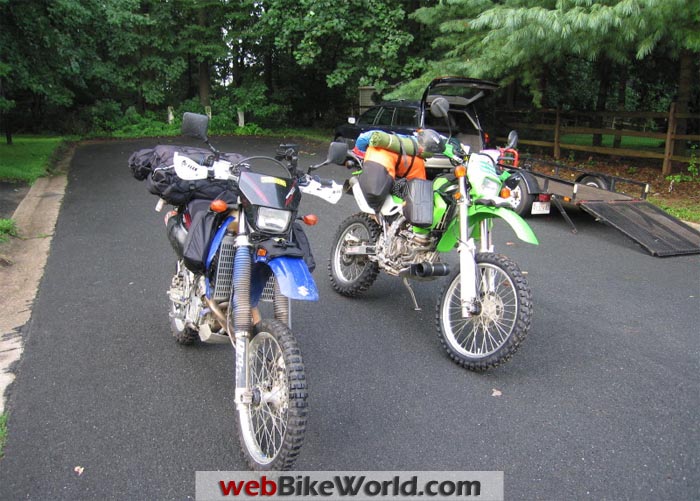
About That Pass…
Now this puzzled us because we had made Cinnamon Pass earlier in the day (which is only 600 feet lower) without any drama, much to my glee, since this was the site of my previous year’s “incident” on my R1150GS.
It wasn’t until later that evening that I remembered reading about removing the cover on the air intake box to allow more air to enter the air filter as a temporary solution for the altitude problem.
The next morning we did just that and found it made a big difference on both bikes; more so on Glen’s than mine.
Because of our location that morning it wasn’t practical to backtrack and knock off California Pass, but Ophir Pass (11,789 feet) went without a hitch (Here’s a Wikipedia listing of Colorado mountain passes with improved and unimproved roads).
Problems Already?
I should back up to the first day, because for a while there I thought the trip was over before it even started.
The bikes had been shipped to Erico Motorsports in Denver, Colorado, who was most gracious to accept our bikes and hold them for a couple of days until our arrival.
We arrived at the airport around mid-day and were pumped to get on the road and beat the rush hour traffic, since it was a Friday. That is, until I found that the battery in my DRZ-400S was all but dead.
This was something I should have replaced beforehand and, of course, the dealer had nothing to fit the Suzuki, so we jump-started it and I let it run while we quickly re-packed our gear.
Well, it must have been running longer than I thought because I happened to look over in time to see steam blowing out of the bottom of the bike and the over-flow tank filling with coolant!
Great, I thought — now I’ve caused it to overheat! “I’m done, the trip’s over” were the thoughts running through my mind at this point.
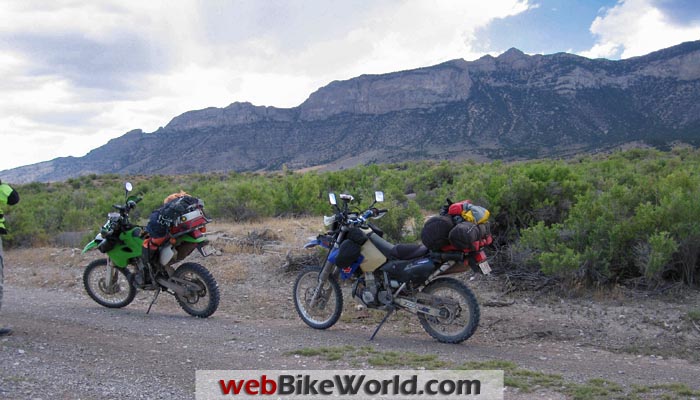
Battery, Coolant…What’s Next?
Further investigation uncovered the fact that the Suzuki’s cooling fan was inoperative — something I never thought of testing beforehand. Shame on me, eh?
Murphy’s Law came into play, of course, when I also discovered that the dealer had nothing that would fit. But, they were kind enough to make some calls in an attempt to find one nearby, new or used, but to no avail.
On one of the calls to a motorcycle salvage yard, the person on the other end said that the off-road version of the Suzuki DR’s don’t even have a fan and to not worry about it. Just don’t let it sit and idle. So, in the end that’s what I did.
By this time, the engine had cooled off enough to restart and off we went. Whenever we were stopped in traffic I simply shut it off.
During the remainder of the trip despite deep sand, steep climbs and some slow technical riding the hot engine light came on only twice. Both times I noticed I was moving slowly and had a tail wind which I suspect neutralized air flowing over the radiators.
One time I hopped off and poured water over the radiators, which immediately cooled things off; the other time I was able to gently get up to speed and coast.
And one more thing: that battery didn’t hold a charge overnight, so we found a battery store nearby, replaced it the next morning and took off to rejoin the Trans-America Trail en route toLake City, Colorado.
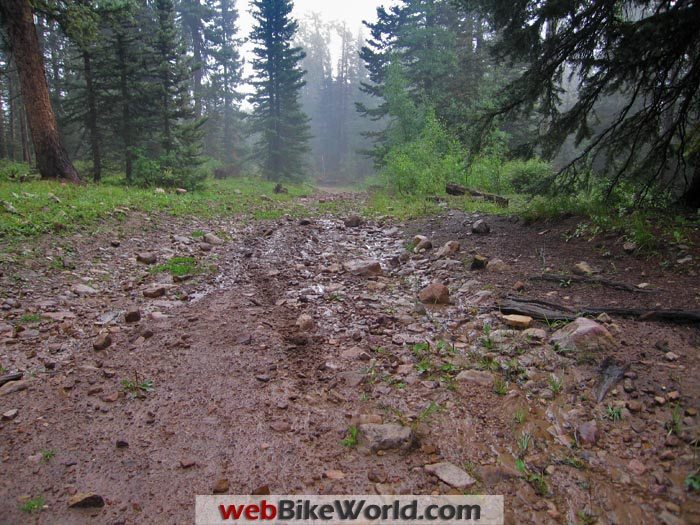
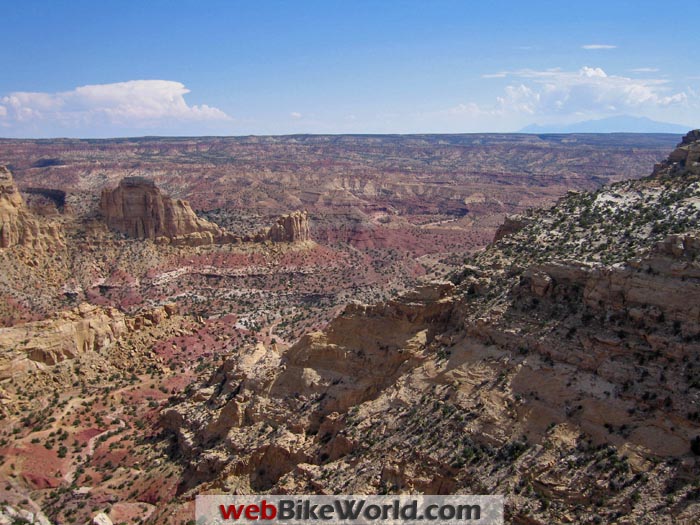
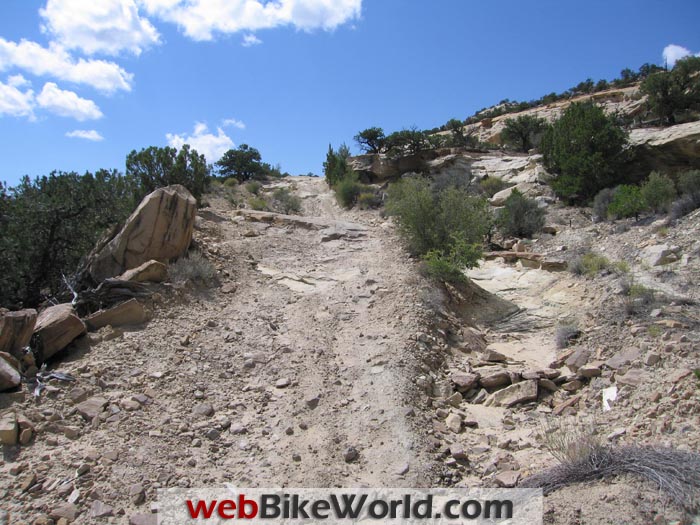
DRZ-400S Accessory Performance
The IMMX Racing luggage rack (review) performed perfectly and my custom rear sub-frame brace (report) showed no signs of fracturing, so maybe the brace was a good idea after all, because many of the roads were severely wash-boarded and both me and the DR-Z took quite a beating…
The motorcycle tool tubes (review) also worked flawlessly and despite one reader’s concern they would be the first thing to break off in a tip-over, I had no such issues.
On two occasions, I had my foot caught underneath the right side tube, but it never cracked or broke off. I suspect the way I had the bike packed helped protect them in a fall.
I should point out that every “off” I experienced was at a crawling speed, so that may have helped too.
And those tool tubes came in handy; as usual when riding with Glen, it was necessary to access the tools on many occasions!
The oversized Clarke fuel tank and Rotopax fuel packs (review), which are auxiliary fuel containers, were absolute necessities, considering the distances we were covering between fuel stops, or anything else for that matter.
And the heated grips that the previous owner had installed in the Suzuki was a sweet treat on those cold mornings and in the rain at the higher altitudes.
Gearing and Sprocket Choices
Although I had bought a 14 tooth front sprocket, in the end I chose to stay with the stock (according to the shop manual) Suzuki setup of a 15 tooth front and 41 tooth rear sprocket.
I’ll admit, there were times I wished I had installed that 14 tooth front sprocket…except when we were on a paved road at speeds up to 80 MPH.
Riding “tail-gunner”, I had to watch my rear view mirrors closely for both of us, because Glen’s left mirror bit the dust early on.
Regardless of the grades — and there were some steep ones for sure — my DR-Z400S with its 400 cc single cylinder climbed them without incident (unlike Glen’s KLX 250).
If it was a paved road, the joke was that I had to ride up along side and push him so he could make it to the top!
When riding in the sand (and we did more than I cared for) the light weight of the DR-Z400S compared to my BMW R1150GS (review)made it easy to control. It was so much easier to pick up too!
Conclusion
All in all I think my DR-Z400S was a GREAT choice for the terrain and my skill level on the Trans-America Trail ride. Yeah, I’m sure an expert could get my R1150GS through some of that stuff — but I know I couldn’t. Something or somebody would have gotten hurt if I had tried.
During the past 15 years, I’ve owned bikes of at least 1,000cc or more, but this 2003 Suzuki DR-Z400S has made me realize that bigger is not always better.
Yes, it works hard when asked to do more than 65 MPH…but it’s tons of fun below that and it will go anywhere, as I have proven.
I’m really going to miss that happy “Thumper”, because the deal with my wife was that I could buy the bike (number 3 in the garage) for the Trans-America Trail ride but I had to sell it afterwards.
The bike let me do things and go places I wouldn’t DREAM of going on my GS. And, it used only about 1 cup of oil throughout the entire trip!
Master Listing of All wBW Motorcycle Product Review
Owner Comments and Feedback
See details on submitting comments.
From “B.M.” (December 2013): “The TAT is all about compromise, do you want something smaller and light that suffers through the high speed stuff and excels in the limited nastiness? Or something that’s the opposite…
Any bike can do the trail. Just as an example, this guy did it (mostly, more than you’d think) on a Harley Bagger…. with a sidecar.
One of the 650 dual-sports would be fine. Heck, take a Vstrom… or if you’d rather, there was a CB500-four that joined the guy in the link… you know, just incase you like an extra dose of Adventure.”
Editor’s Reply: Note that the guy with the sidecar says “Yes, I know there’s [sic] some trails out west that may not be possible…”
All I can say is that many people talk about riding the Trans-America Trail…but Chris actually did it.
He rode the entire trail, from start to finish, all the way to the Pacific Ocean. Yes, it can be done on other bikes, but why knock yourself out? For what purpose? The idea is to have fun. Taking a Harley on the Trans-America Trail is not my idea of fun…
From “C” (December 2013): “Had you taken the project DR650 (blog), do you think the weight / torque / carrying capacity would have made the trip harder or easier or even do-able?”
Rick’s Reply: I didn’t make the ride myself, but Chris took his BMW R 1150 GS on the first half of the ride last year and said it was too big and heavy. I offered to lend him my DR650 but he thought it would be too big also.
He thinks the DR-Z400S was perfect, he bought it used, rode it, then sold it and pretty much broke even.
Here’s his response: “For me (and my skill level), the DR-Z400S was an excellent choice. It’s targeted more for off-road than the DR650 and it’s slightly lighter, though only by about 20 lbs. I think.
But that 20 lbs. can come into play when lifting it back up or off your leg.
I haven’t ridden a DR650 but once and that was in a field for only a few minutes. I would have to ride them side-by-side to better answer your question.
I think a lot depends on the skill level of the rider. I’m sure there are plenty of skilled riders that could have ridden my R1150GS the entire way, but I’m certainly not one of them.
When we were struggling to get up California Pass, four riders came blasting down from the summit at a pace I wouldn’t dream of traveling on that grade with its rocky surface.
I liked the standard dual trip meters on the DR-Z400S and the fact that I could adjust them for different size tires and the digital speedo.
These are only available on the DR650 if you install an optional electronic instrument cluster.
Things I did notice compared to Glen’s KLX 250: his bike was geared much lower, which was a plus when climbing and descending. I had to ride the rear brake when he could simply use engine braking in 1st gear on the descents.
On the flip side, he could crawl up in 1st gear, whereas I would have to either use the friction zone or give him a good head start and then blast up the hill.
A DR650 would probably do better on the highway, but that wasn’t our target. Hope this helps some.”
Other WebBikeWorld Brands Posts


